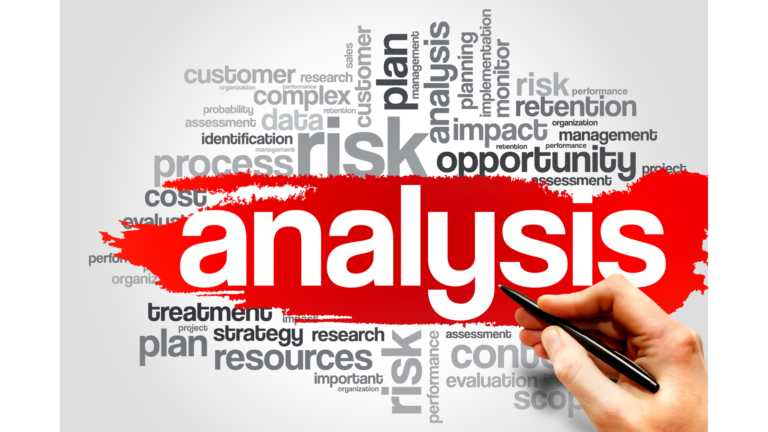[vc_row][vc_column][vc_column_text]
The consumer packaged goods (CPG) industry is undergoing another profound transformation, driven by the rise of brands expanding their influencer marketing.
These ventures, spearheaded by social media personalities, redefine how products are launched, marketed, and consumed.
By leveraging authenticity, pre-built audiences, and direct engagement, influencers are disrupting traditional brands and creating entirely new market dynamics.
If you prefer to listen rather than read:
The Power of Influencer-Led Brands
Influencers have built careers on relatability, trust, and engagement with their audiences. This unique connection translates seamlessly into the consumer marketplace.
When Logan Paul and KSI launched Prime Hydration in 2022, their built-in fan base helped propel the brand to $1.2 billion in sales within just one year. This staggering success highlights how influencers can skip the slow burn of traditional brand-building and go straight to market dominance.
Similarly, Emma Chamberlain’s Chamberlain Coffee leverages her personal brand as a coffee enthusiast. By aligning her product with her authentic interests, she not only attracts her YouTube followers but also a wider audience of coffee lovers. The brand recently secured $7 million in funding to expand its reach, showing that authenticity paired with strategic growth can be a winning formula.
Another standout example is MrBeast’s Feastables. Known for his elaborate and charitable YouTube stunts, MrBeast created a snack brand that mirrors his fun and engaging online persona. Within a few months of launch, Feastables generated $10 million in sales. MrBeast’s willingness to involve his audience in the brand’s journey, such as soliciting feedback on packaging and flavors, has solidified the brand’s appeal.
Even in the personal care space, influencer-led brands are making waves. Jake Paul’s W body care brand raised $11 million in Series A funding in mid-2024, signaling that influencer-led ventures are not limited to snacks and beverages. W’s young, male audience is drawn not just to the product but to the personality behind it, showcasing how effective these ventures can be at capturing niche markets.
Authenticity as a Key Differentiator
Authenticity is the cornerstone of influencer-led brands.
Consumers increasingly seek transparency and connection, valuing brands that reflect their own values.
For example, MrBeast’s Feastables infuses the influencer’s playful yet philanthropic ethos. Feastables earned $10 million in chocolate bar sales within its first few months by resonating deeply with MrBeast’s audience.
Established CPG brands can learn from this. Dove’s Real Beauty campaign is a standout example of how a traditional brand can also build authenticity. By shifting the focus from products to shared values, Dove has sustained consumer trust for over a decade, demonstrating that even large brands can adapt this influencer-driven strategy.
Another great example is Nike. By consistently aligning its campaigns with cultural and societal values, Nike has managed to remain relevant across generations. Its collaboration with Colin Kaepernick, despite being polarizing, resulted in a 31% spike in online sales and reinforced its position as a brand that stands for something bigger than its products.
The rise of influencer-led brands also highlights the importance of storytelling. Consumers are drawn to brands that tell compelling stories. Influencers often excel at this by weaving their products into their personal narratives. Traditional brands that embrace storytelling as a core strategy can enhance their authenticity and relatability, fostering stronger customer loyalty.
Agility in Product Development
Influencer brands thrive on their ability to adapt quickly. Unlike traditional corporations, these ventures can leverage direct consumer feedback to fine-tune their offerings. Feastables adjusted its packaging and expanded flavors based on real-time input from its customers. This responsiveness fosters loyalty and keeps the product offering fresh.
Nike provides a lesson in agility from the traditional CPG perspective. Collaborating with athletes and influencers, Nike co-creates campaigns that feel personal and timely. The Colin Kaepernick campaign, which drove a 31% increase in online sales shortly after its release, is a testament to the power of staying attuned to cultural moments.
Traditional brands can also take cues from smaller challenger brands like Liquid Death, which entered the market as a canned water company. Known for its edgy marketing and willingness to experiment with provocative campaigns, Liquid Death has managed to attract younger consumers and disrupt an otherwise staid category. Listening closely to its target audience has allowed the brand to quickly adapt its messaging and product offerings, resulting in a valuation of over $700 million in 2023.
Another example of agility is the skincare brand TULA, which partners with influencers to co-create products. By involving influencers in the product development process, TULA ensures its offerings resonate with their target audience, leveraging influencer credibility while also gathering insights to refine its portfolio.
Community-Centric Marketing
Successful influencer-led brands turn their audiences into communities. Prime Hydration’s social media challenges and user-generated content campaigns create a sense of belonging. Similarly, Chamberlain Coffee’s branding extends beyond products, encouraging fans to share their own “coffee moments” online.
Traditional brands can replicate this strategy by fostering deeper connections with their customers. Coca-Cola’s “Share a Coke” campaign, which personalized bottles with consumer names, generated widespread social sharing and a 2% increase in sales in the U.S. during its initial rollout. This type of campaign demonstrates how legacy brands can inspire community-driven engagement.
PepsiCo has also demonstrated the power of community-centric marketing. By collaborating with TikTok influencers to create viral dance challenges for Mountain Dew, the brand reached over 3 billion views in a single campaign. These efforts highlight how even established players can leverage social platforms to build engaged communities.
Another notable example is Patagonia’s approach to fostering community through activism. By aligning its brand with environmental causes and encouraging customers to participate in initiatives like clean-up drives, Patagonia has cultivated a loyal community that aligns with its values. This type of engagement transcends product sales and positions the brand as a movement.
The Risks of Influencer-Led Brands
While influencer brands have significant advantages, they also carry unique risks. Over-reliance on the founder’s personal reputation can backfire. Matilda Djerf’s Djerf Avenue—a fashion brand built on her personal style—faced backlash when allegations about poor workplace conditions surfaced. Such controversies can tarnish both the influencer and the brand, highlighting the need for diversified brand identity.
Sustainability of engagement is another challenge. Zoella Beauty, an early influencer-led brand, struggled to maintain its audience as its founder’s popularity waned. This illustrates the importance of evolving the brand’s identity beyond the influencer to ensure longevity.
Even scaling can become an issue. As Chamberlain Coffee expanded into major retailers, some fans lamented the loss of its boutique, personal touch. Striking a balance between growth and maintaining the authenticity that initially drew consumers is a delicate challenge.
Why Influencer Marketing Is Not Dead
In recent years, some have speculated that influencer marketing may be losing its shine, but the numbers tell a different story. Influencer marketing remains a powerful tool, particularly for CPG brands looking to connect with younger, digitally savvy consumers. Here’s why:
- Unparalleled Reach and Engagement Influencers command audiences that traditional advertising often struggles to reach. For example, TikTok influencer Charli D’Amelio partnered with Dunkin’ Donuts to promote a signature drink, resulting in a 57% increase in app downloads and a significant spike in sales. Platforms like TikTok, YouTube, and Instagram continue to grow, offering CPG brands a direct line to millions of consumers.
- Higher ROI Influencer marketing delivers measurable results. According to Influencer Marketing Hub, the average ROI for influencer marketing is $5.78 for every dollar spent. Brands like Glossier and Fenty Beauty have built their entire marketing strategies around influencer partnerships, demonstrating the ongoing value of this approach.
- Shifting Consumer Trust Consumers increasingly trust individuals over corporations. A 2024 Edelman Trust Barometer report showed that 61% of Gen Z and Millennials trust influencers as much as friends or family when it comes to product recommendations. This shift underscores the need for CPG brands to align with credible voices in their industries.
- Evolving Influencer Models The influencer landscape is evolving to meet criticisms. Many influencers now focus on authenticity and long-term brand collaborations rather than one-off promotions. For example, skincare brand Drunk Elephant’s ongoing partnerships with micro-influencers have helped it sustain credibility and drive consistent sales growth.
- Cross-Channel Synergy Influencers can amplify traditional campaigns. Nike’s collaborations with influencers during major events like the Olympics extend their reach, combining the credibility of athletes with the engagement of digital creators.
Case in Point: Maybelline’s Success with Influencers Maybelline’s partnership with beauty YouTuber NikkieTutorials boosted its product launch by over 35% compared to traditional campaigns. This collaboration not only introduced the brand to a younger audience but also enhanced its reputation for inclusivity and innovation.
Lessons for Established CPG Brands
Influencer-led brands are rewriting the rulebook, but traditional CPG companies can adapt and thrive by integrating these lessons:
- Foster Authenticity: Consumers value honesty and transparency. Highlighting founder stories, community contributions, or employee perspectives can humanize large brands. PepsiCo’s Doritos “No Logo” campaign, which removed branding to let product quality speak for itself, resonated with younger audiences.
- Engage Directly with Consumers: Listening to and acting on consumer feedback builds trust. Coca-Cola’s use of social media listening tools to develop new flavors demonstrates how legacy brands can innovate collaboratively.
- Partner with Influencers: Collaborations don’t need to mean relinquishing control. L’Oréal’s partnership with micro-influencers for the True Match foundation increased sales by 34% by targeting niche audiences authentically.
- Leverage Limited Editions: Scarcity drives excitement. Oreo’s collaborations with Lady Gaga and other celebrities not only boost sales but also generate significant social buzz.
- Invest in Community Initiatives: Beyond product marketing, creating opportunities for customers to engage with the brand’s mission can deepen loyalty. Unilever’s Dove Self-Esteem Project is an excellent example of this, positioning the brand as a champion for real beauty while fostering meaningful connections.
The Data Speaks Volumes
- 49% of consumers rely on influencer recommendations to make purchasing decisions. (Source: Influencer Marketing Hub, 2024)
- 65% of Gen Z consumers prefer purchasing from influencer-endorsed brands over traditional ones. (Source: Forbes, 2024)
- Engagement rates for influencer-led campaigns are up to 3x higher than traditional ads. (Source: Statista, 2023)
- 80% of marketers believe influencer marketing is effective, with an average ROI of $5.78 for every $1 spent. (Source: Influencer Marketing Hub, 2024)
What’s Next for CPG?
The rise of influencer-led brands underscores the need for agility, authenticity, and innovation. Traditional brands must evolve, blending the strengths of legacy operations with the emotional resonance influencers bring. Those that fail to adapt risk being left behind in a rapidly changing consumer landscape.
The future of CPG lies in the ability to embrace change, foster genuine connections, and continuously innovate. By learning from the successes and challenges of influencer-led brands, traditional companies can not only remain competitive but thrive in this new era of consumer engagement.
How is your organization adapting to this new reality? Whether you’re integrating influencer partnerships or rethinking consumer engagement, share your insights below. Let’s discuss the future of CPG together!
If you’re ready to integrate influencer marketing into your portfolio strategy, we suggest an information audit beforehand, to ensure you don’t invest in actions that will not deliver on your expectations.
Book your FREE Business Makeover Session NOW!
 [/vc_column_text][/vc_column][/vc_row][vc_row css=”.vc_custom_1756213384715{padding-bottom: 20px !important;background-color: #F2F2F2 !important;}”][vc_column width=”1/2″][vc_custom_heading text=”Consumer Trends 2025″ font_container=”tag:h3|text_align:left|color:%231E73BE” use_theme_fonts=”yes” css=”” link=”url:https%3A%2F%2Fc3centricity.com%2Fconsumer-trends-2025-cpg-playbook%2F”][/vc_column][vc_column width=”1/2″][vc_custom_heading text=”Delight” font_container=”tag:h3|text_align:right|color:%231E73BE” use_theme_fonts=”yes” css=”” link=”url:https%3A%2F%2Fc3centricity.com%2Fmeasure-customer-delight-brand-loyalty%2F”][/vc_column][/vc_row]
[/vc_column_text][/vc_column][/vc_row][vc_row css=”.vc_custom_1756213384715{padding-bottom: 20px !important;background-color: #F2F2F2 !important;}”][vc_column width=”1/2″][vc_custom_heading text=”Consumer Trends 2025″ font_container=”tag:h3|text_align:left|color:%231E73BE” use_theme_fonts=”yes” css=”” link=”url:https%3A%2F%2Fc3centricity.com%2Fconsumer-trends-2025-cpg-playbook%2F”][/vc_column][vc_column width=”1/2″][vc_custom_heading text=”Delight” font_container=”tag:h3|text_align:right|color:%231E73BE” use_theme_fonts=”yes” css=”” link=”url:https%3A%2F%2Fc3centricity.com%2Fmeasure-customer-delight-brand-loyalty%2F”][/vc_column][/vc_row]








